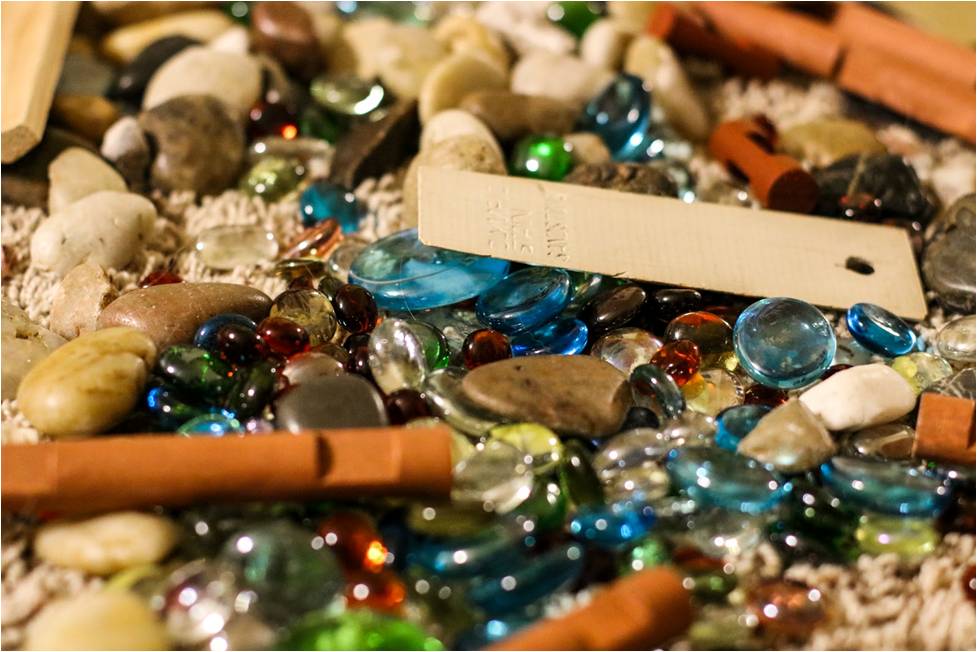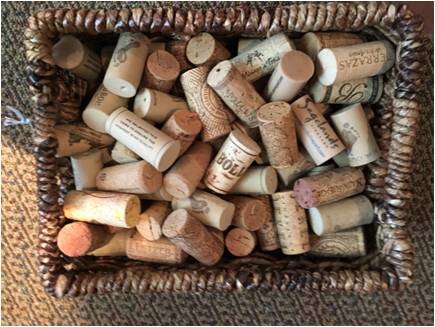If I were completely honest, I’d tell you I nearly gave up on loose parts because of the mess in my classroom at the end of the day.
I remember seeing all of those beautiful photos of loose parts in action. I loved the creativity, exploration, and inventiveness the children were engaged in.
The first day I introduced loose parts in my block center – the children poured every last one on the carpet. Every. Last. One. Piles of loose parts lay on the floor while children treated them with utter disrespect. Oh my.
. . . It was chaos. I had failed to prepare my students.
Why Beginning Small and Limiting Quantity is the Fastest Way to Teach Students
This was my first mistake. I put out baskets filled to the brim with loose parts. Hundreds of corks, rocks, seashells, and other bits and pieces. It was waaayyyy too much.
Tip: Begin with one center. Pick five loose parts to introduce in that center. Put out just 10 of each of those loose parts. No more.
This will help children manage clean-up time and find the “home” of each new loose part. It can be helpful to attach a photo of the loose part to the basket or container. I always call the container the loose part’s home. This helps to establish the location where to return a loose part.
Example of introducing the loose part’s container: “All the corks live here. This is the corks home.”
How Modeling the Use of Loose Parts Helps Children Engage
I assumed the children would immediately begin using the loose parts in their constructions. I did not anticipate the dumping and wild play. Me oh my.

Here’s the thing. Children may not naturally know what to do with loose parts. Think about it. So many toys have predetermined uses. Traditional materials often have a clear pathway to play. If your students are disrespectful with loose parts – there is a good chance they do not know what to do. Don’t assume they do!

I love setting up a demonstration with loose parts and engaging in conversations around it with my students. Also this is a good time to make sure you have a variety of big and small loose parts.
Example of discussing invitation: (Class is sitting around block provocation.)
- I am wondering what this could be . .
- What do you see?
- What was used to build it?
- Do you have ideas for it?
Game: An Alternative Approach to Help Students Pick Up and Sort Loose Parts
On that fateful first day of loose parts, I began singing my normal clean-up song. The children quickly grew tired of picking up the loose parts and began to put them in whatever basket they could find. Every basket was filled with a mixture of loose parts. Seriously. Could I blame them?
Tip: Use games and special songs to help children pick up and sort the loose parts.
Example: This is a great song to introduce where to put away specific loose parts
Everyone Pick Up
(to the tune of London Bridge is Falling Down)
Everyone pick up, pick up, pick up.
Everyone pick up, in our classroom.
All of the [buttons] go here, go here, go here.
All of the [buttons] go here, in our classroom.
Put the [logs] on the shelf, on the shelf, on the shelf
Put the [logs] on the shelf, in our classroom.
Use the name of the item and where it needs to go! Model putting the loose part where it goes.
Grab the Loose Parts Games & Songs download here!
End loose parts chaos! I have put together four of my favorite loose parts games and songs for you to try in your classroom. Click here to grab your copy.
Do you have a favorite song, game or strategy for loose parts clean-up? Share below in the comments!








Hi Sally…
I haven’t downloaded your songs yet but this is my favourite one. Sing to the tune of Frere Jacques
I found a button? Have you any buttons? They live here…. they live here
Lets gather all the buttons, lets pick up all the buttons and put them here, lets put them here.
I love this!! “they live here” is brilliant!! Thank you so much for sharing!!
This tune to “Here We Go Around.The Mullberry Bush” This is the way we pick up our blocks, pick up our blocks, pick up our blocks and put them in their basket.
Yay! Love this! Thank you so much for sharing!
Sorry I think I left out This is the way we pick up our blocks …, following the third pick up our blocks
I have been using loose parts for sometime In fact for some 5 years and yes it can be a mess sometimes but I started with little things like corks and bobbins, glass beads then added a few more each month. I use the motto
less is more…………so I rotate because we do not have the space we now have larger pieces to use outside and the exploration going on if phenomenal…….I love it
“Less is more” is such wise advice. It really can be the difference between workability and chaos. Thank you for your great tips!
Thank you … I do sing EVERYTHING and anything and it works well for me. I sing the instruction twice and add the reason for most things this was very good to read and helped me think about what I do. And remind me why I LOVE your emails.
You bring up a super important point. It does take singing the instructions more than once. Repetition is the mother of early childhood. Thank you for the reminder!
For a number of years I taught Kindergarten in a private school. When ever I made changes to the classroom the children and I would talk about the changes, look at the materials together. This allowed me to introduce the loose parts in that center and talk about “their home”. I brought in A LOT of nature items. One of the favorites over the years was a decaying log, covered in moss and small plants. I would put out tweezers, clear containers with lids, trays, etc. At first children were a bit uncertain what to do with the big log in the classroom, but as time went by they started to explore the moss and plants growing on the outside and then slowly started breaking apart the wood to discover a whole host of creatures inside the log. The conversation, discover, and wonder was endless.
Love this! I can just imagine the conversation. Thanks for sharing!
We use a bit of peer role modelling. To the tune of ‘London Bridge is falling down’ we sing,
‘Everybody tidy up, tidy up, tidy up,
Everybody tidy up, just like (name)’
The children love to be named and when they ask why they haven’t been named we can suggest how they can help us.
Love! I especially love naming the child! Such fairy dust!
Thank you Sally.
I have a question..I thought that play was the child’s area and you are suggesting that we put up something with the objects for the children??
Please clear this up for me I want to do this right.
I put 5 baskets atound the room each with one sort of object-10pieces- and let the kids decide…
Is this not the right way?
Hallelujah! For as many years as I have been following post about Reggio Emilia, this is the first article I have seen about clean up. LOVE it (-:
The first time we introduced loose parts to our two year olds it was a specific table activity. We had clear trays with fine sand and paintbrushes with rocks, shells, beads, etc. slowly we have added things in different areas that stay out. We definitely follow the adage “less is more”.
Sometimes I find children look at the number of things to be cleaned up and get overwhelmed and do nothing. I find that if you assign a specific loose part (or toy) to a specific child (ie “John you can collect the tree cookies, Jane you can collect the corks…) then they can focus on just one thing and are easily able to clean it up.
Hi Sally,
We do sing the clean up song. A group discussion about “how do you want to see your classroom the next day?” we left. The environment without cleaning, few of them were upset too. We setup the invitation to in darkness and asked them to draw, read books and eat snacks etc
We like to song the traditional tidy up some “it’s time to tidy up” but then we song “I like the way that (child) is cleaning… ” It gives it child a bit of praise and helps others to follow and tidy as well!